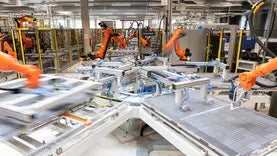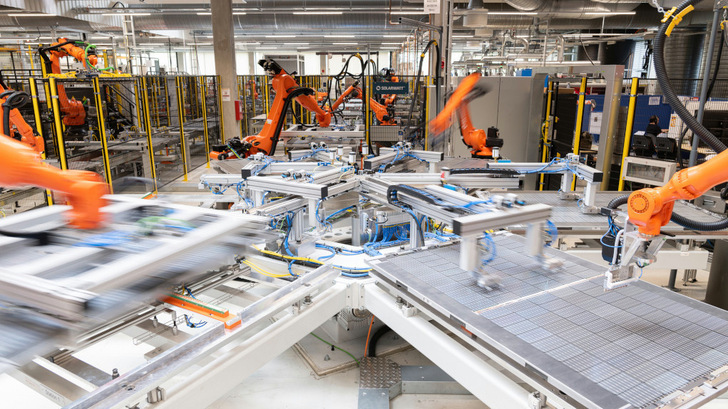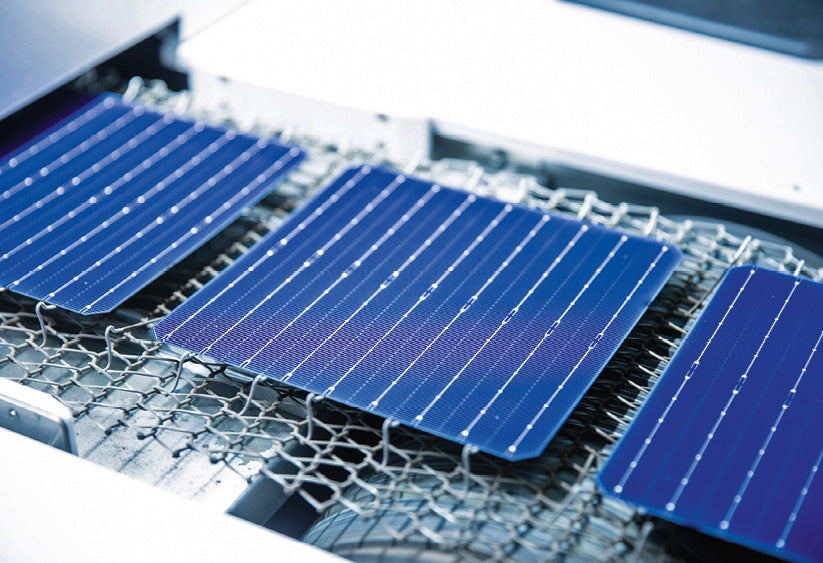https://www.pveurope.eu/financing/european-pv-manufacturing-module-supply-chain-buy-make-or-be-ready-make
Module supply chain: buy, make or be-ready-to-make?
What would be the impact of bringing the PV module supply chain to the EU on project costs, manufacturing jobs and supply chain security?
Two arguments are typically given for re-establishing module manufacturing in the EU. First, it is the will to retain the value-added from EU’s energy transition spend in Europe. This topic gained particular momentum since the beginning of module price increases in mid-2020. The US is frequently cited as a success case in this regard. Second reason – securing stable supplies – gained additional importance after the war in the Ukraine broke out that resulted in gas supply interruptions.
Module supply chain – a single-digit-margin industry
Despite what is being frequently argued, the Asia-based module manufacturers are not capturing as much value from EU’s power transition spent as it may appear. According to an annual analysis by the US National Renewable Energy Laboratory, the operating margins of major polysilicon, wafer, cell and module manufacturers have been low single figures throughout the past decade – if in the black at all. This is despite huge benefits of scale and process automation that leading module manufacturers benefit from. According to Infolink, in H1 2022 top 10 manufacturers covered 80 – 90% of the global demand; top 4 manufacturers accounted for ca. 70% of this supply.
According to NREL data, the value-added from the power transition spent stays predominantly in the Western Hemisphere. This is because by far the highest margins in the PV value chain are by far generated by project developers – companies most frequently based in North America or the EU.
Extra USD 10 bn to spend – per year
One of the key reasons why module manufacturing moved to Asia were lower production costs. What would be the impact of now reverting this trend on project development costs?
According to InfoLink, module prices in Europe do not exceed USD 0.30/ W (FOB + shipping), whereas in the US the price is 0.50-0.60/ W for locally made modules. If the premium for locally produced modules was USD 0.20/ W, then installing 26 GW of PV that the EU countries added in 2021 would cost developers, C&I and residential customers an extra ca. USD 5 bn. Considering that the European Commission forecasts that ca. 50 GW of solar panels would be added in the EU every year until 2030, that figure climbs to ca. USD 10 bn per year.
Additional 20,000 manufacturing jobs in the EU
What would be the job creation potential of bringing module manufacturing back to Europe? If we take QCells factories in Georgia as a benchmark (3 GW capacity, ca 1,200 employees), 50 GW of capacity to secure the European demand would result in ca 20,000 new jobs created.
That means that sustaining one extra job in the EU module manufacturing sector would cost ca. USD 500,000 a year (USD 10 bn of additional costs / 20,000 jobs).
Supply chain security: PV modules vs. oil, gas and other commodities
In contrast to gas, coal and other energy commodities, in case of module supply interruptions all existing PV installations would continue operating. Therefore, PV is more resilient to supply chain ruptures – if crisis comes, developers will need to postpone their projects, but stability of production from existing facilities will be secure. “If we could bring domestic production capacity online in 6 to 18 months after imports from Asia are stopped, the impact of supply interruptions would be reduced to a potentially costly and problematic, but ultimately manageable nuisance” says Bartosz Majewski, CEO of Menlo Electric.
Rather than bringing a manufacturing capacity back to the EU, we may be able to achieve the same goals with a less costly measure – developing a European ready-to-ramp up manufacturing capacity. “OPEC (and Saudi Arabia, in particular) serves as an example in oil markets. By maintaining spare capacity, it is able to manage the prices in the market – by bringing this capacity online in the event that prices reach unacceptable levels resulting in oil demand destruction,” Bartosz Majewski, CEO of Menlo Electric.
New financing mechanism for maintaining production availability
“In the PV industry, if Asian module manufacturers start dictating overwhelmingly high prices in the market, the EU can respond by initiating production from those dormant ready-to-ramp up manufacturing facilities. Similarly, if supplies are interrupted, this domestic extra capacity can provide a bridge until new sources of modules are secured,” he continues.
However, for this measure to be effective, it cannot be limited only to module manufacturing. Domestic polysilicon, wafer and cell production would also be a must. This solution would still require significant capital expenditures, but not the ongoing extra costs of producing modules domestically, according to him. “To finance this measure, a mechanism similar to a capacity market in wholesale electric power could be applied. In this mechanism, owners of the ready-to-expand capacity are compensated for maintaining availability rather than for direct production” points out Bartosz Majewski, CEO of Menlo Electric.
Module supply chain – a single-digit-margin industry
Considering the ambitious PV development plans laid out by the EU countries, the issue of module manufacturing and security of supply will definitely remain at the top of political and business leaders’ agenda. Clearly, there is no silver-bullet here. It is all the more important that the decision on whether to promote module manufacturing within EU should be based on a careful analysis of trade-offs it would entail. (hcn)




